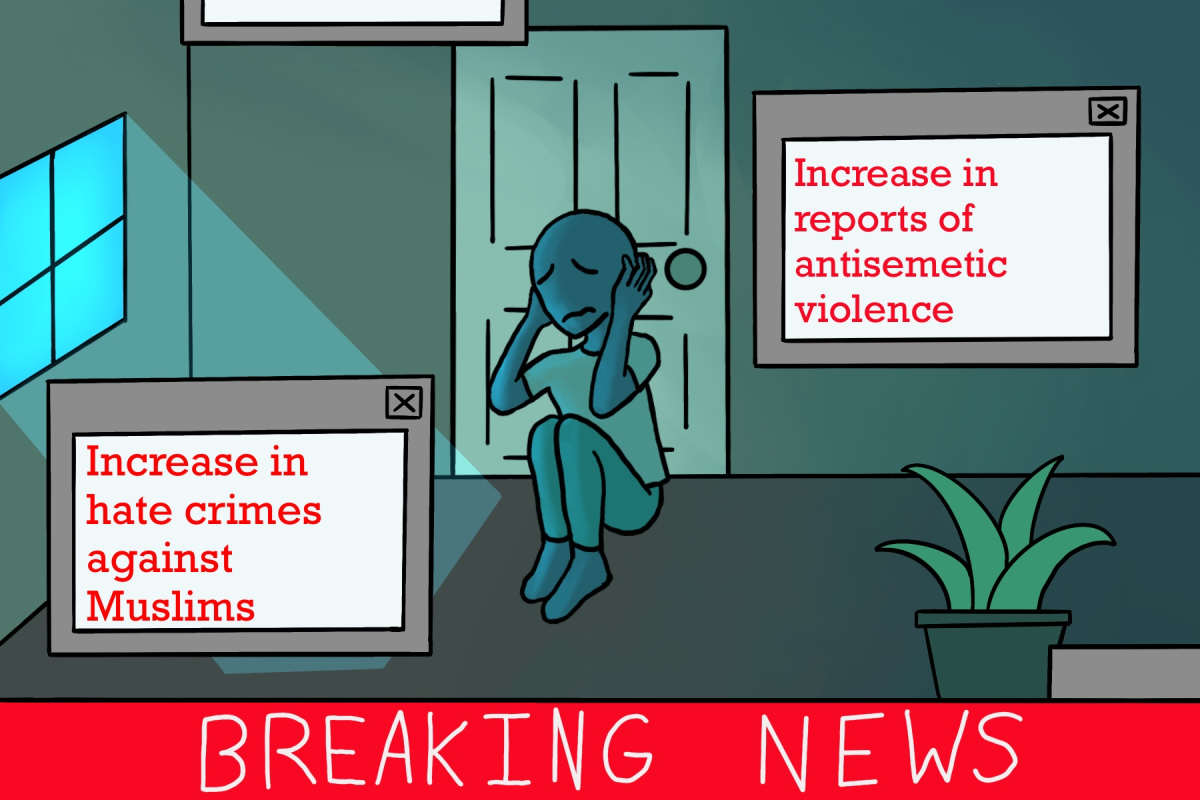As the war in the Gaza Strip continues between the Israeli Defense Force and the Islamic Resistance Movement, better known as Hamas, the world looks on in terror. Since Hamas’ attack on Oct. 7, Israel and Hamas have been engaged in a near chronic state of war. However, the war extends far beyond the Gaza Strip, having divided people across the globe and compelled some to lash out against undeserving Jews and Muslims.
Among obvious foreign policy impacts, the war has prompted a spike in antisemitic and Islamophobic rhetoric and hate crimes in places everywhere, including the U.S.
Young people have virtually no control or say over the actions of their countries’ leaders and yet, the decisions others make–including those regarding the Israel-Palestine war–pervade their lives and affect them in brutal ways.
In Illinois, for instance, a 6-year-old Palestinian boy was brutally murdered for being Muslim only seven days after the Oct. 7 attack.
The rise in antisemitism and Islamophobia has also been clearly demonstrated on social media platforms, which are spaces in which young people are heavily present and are thus heavily exposed to hateful rhetoric.
According to the New York Times, in the month following the Oct. 7 attack, the hashtag “#HitlerWasRight” was used on over 46,000 X posts. NYT also reported that the hashtag “#DeathtoMuslims” has been shared tens of thousands of times.
Thriving Muslim and Jewish communities exist in Broward County, and the hateful actions the war has elicited have hit extremely close to home for many of the students who are a part of these communities.
Thus, this hate has affected MSD students, inciting fear in their communities and forcing them to worry about something that they should never have to: being the target of hate crimes on the basis of something completely out of their control.
According to a study by Dr. Ira M. Sheskin of the University of Miami, Broward remains the largest Jewish stronghold in Florida. The county is home to 149,000 Jewish people as of 2016, with 55% of that population being “extremely or very attached to Israel.”
Similarly, the Muslim Federation of South Florida reports an estimate of over 75,000 Muslims living in Broward County, with roughly one third of that number being students.
On Oct. 29, teens yelled hateful messages such as “kill the Jews” at the members of a Parkland synagogue.
Teens do not just fall victim to hate crimes and their impacts but also to believing the hateful rhetoric spread by others. Students are, after all, at a point in their lives in which they are more fallible to believing misinformation, including that about people of a certain religion or ethnicity.
Muslims in South Florida have also been on the receiving end of hate crimes following the Oct. 7 attack. On Nov. 8, roughly a week after the synagogue incident, a Muslim woman was assaulted in the Ft. Lauderdale area, and the male attacker ripped off her hijab.
Pro-Israeli and pro-Palestinian protestors have clashed across Broward County, and both communities have been on guard since the attack. Broward County Public Schools and South Florida residents were “on high alert” after a former Hamas official had called for a “day of rage” on Friday, Oct. 13. While BCPS had determined there to be “no credible threat” locally, many were still wary of attending school.
No one, particularly students, should be made to feel unsafe because of factors entirely out of their control. The war is a product of the actions of others who do not necessarily represent their beliefs and are certainly not making decisions on students’ behalf.
Therefore, to victimize uninvolved Jewish or Muslim students in the U.S. simply because of their ethnicity or religion is disgusting and a complete misplacement of the anger one may feel toward the war.
To imply in any way that students are somehow deserving of hate or retribution as a result of the decisions of a select group of people is ridiculous. However, it is not the first time that this has occurred.
The COVID-19 pandemic led to an increase in hate crimes, conspiracy theories and hateful rhetoric against Asian people and Asian students around the world.
Former President Donald Trump nicknamed COVID-19 the “Chinese virus,” and Brazilian education minister Abraham Weintraub suggested that the pandemic was planned by the Chinese government in their quest for “world domination.”
As world leaders began insinuating that Asian Americans were responsible for the pandemic, Asian Americans were taunted and even physically assaulted, sending fear throughout Asian communities.
Once again, students became the targets of hate crimes and were subject to brutality over the actions of people on the other side of the word, solely for the reason that they happen to be of the same ethnicity as said people.
One of many examples of this, as reported by the New York Times, occurred when a group of teenagers attacked a 13-year-old boy, throwing basketballs at his head and yelling obscenities, including “go back to China.”
To combat hatred perpetrated local community members need to take both active and preventative measures.
When someone sees something in their community, they need to say something. Hate crimes go significantly underreported in the U.S., and before community leaders and local governments cannot address them, without knowing that they are occurring.
Individuals also need to get involved in their local communities. Meeting and engaging with others, especially others different from oneself, is imperative. Multiple studies have found that connecting with one’s community and exposing oneself to diverse groups of people lowers crime rates and decreases negative demographic-based sentiments.
Standing up against individual instances of bigoted and hateful behavior whenever it is seen, no matter how small, is yet another thing individuals can do to combat such behavior.
Fighting against hate cannot be done with sweeping changes but rather with individuals making decisions that work to prevent hate crimes and keep students safe.
This story was originally published on The Eagle Eye on January 8, 2024.

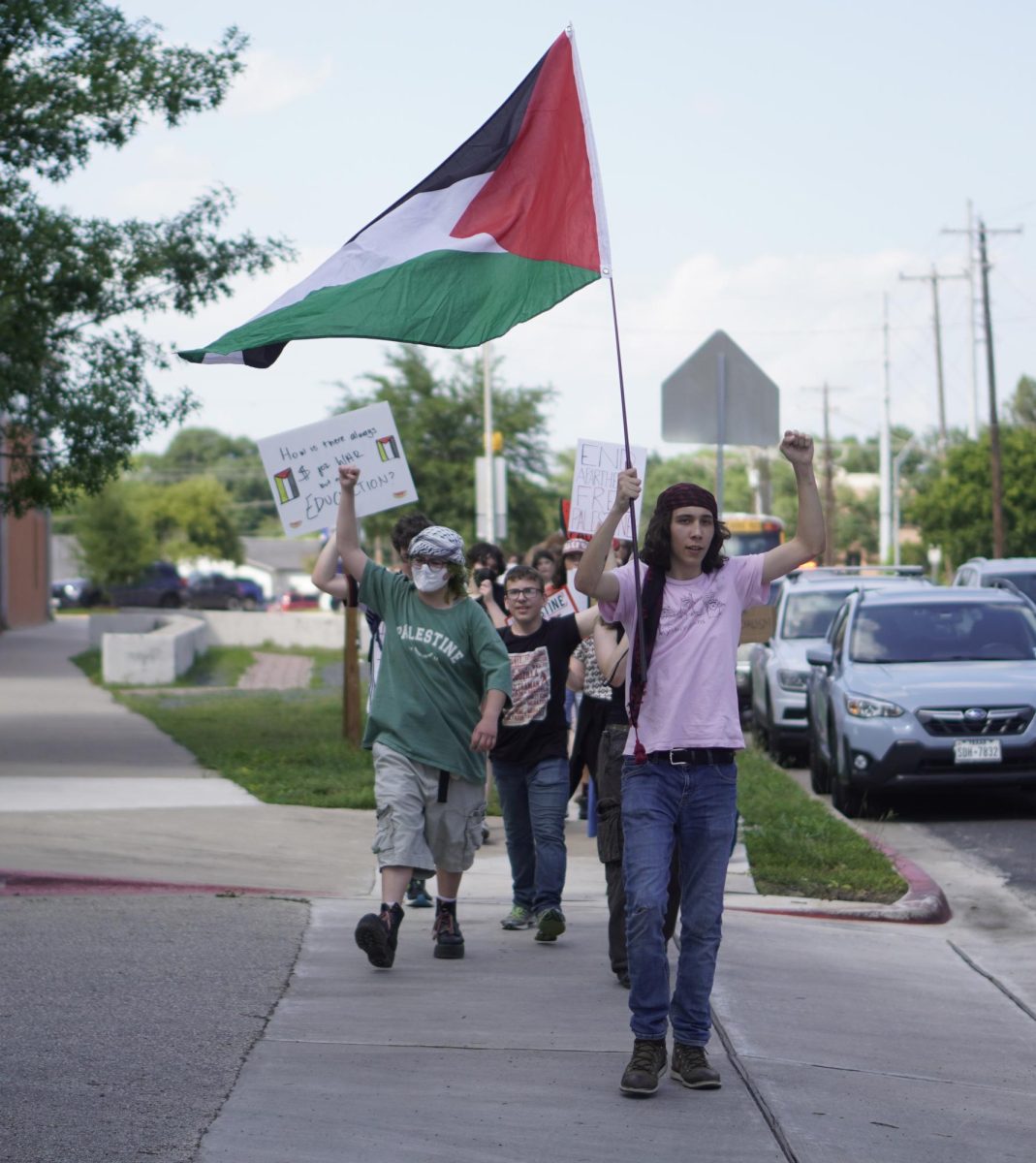
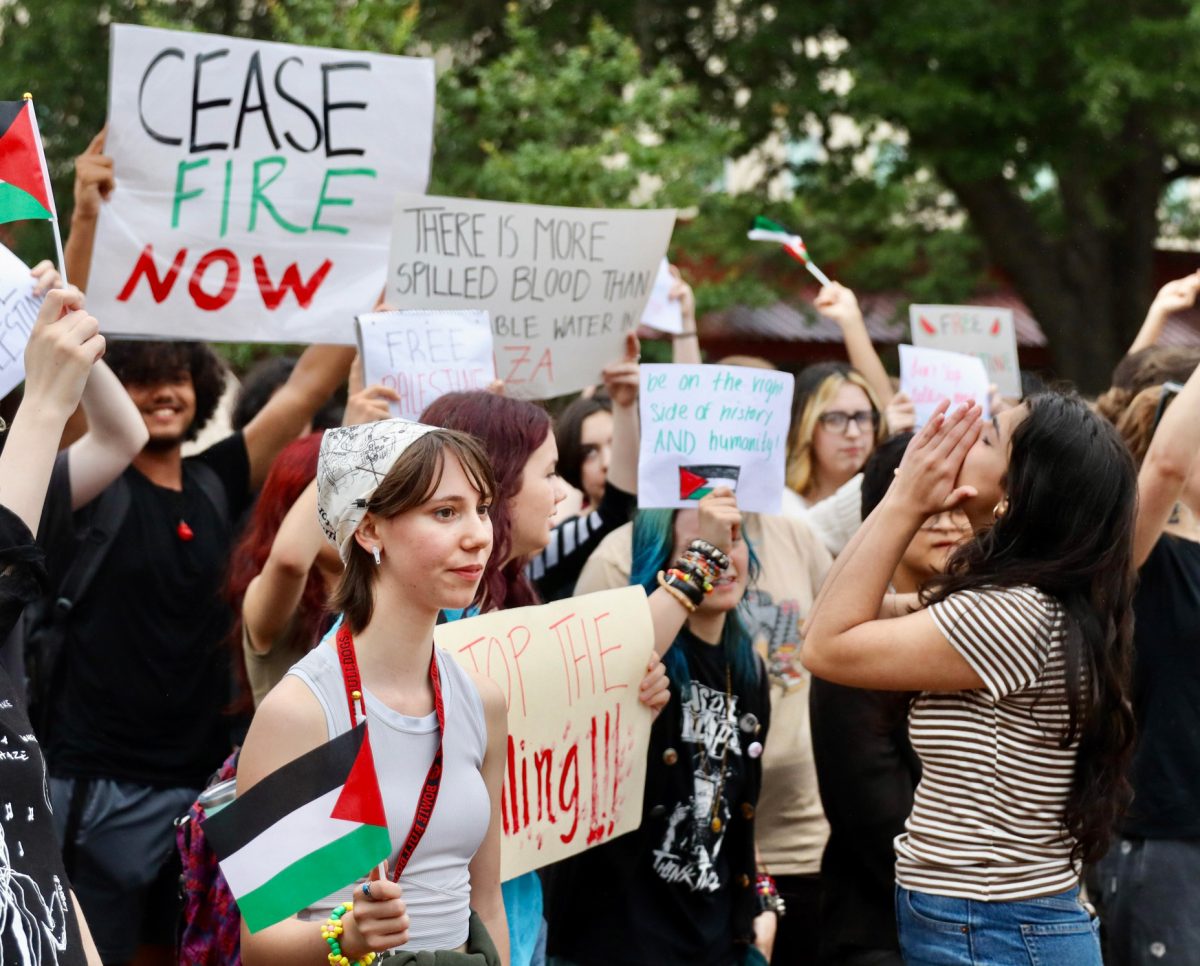
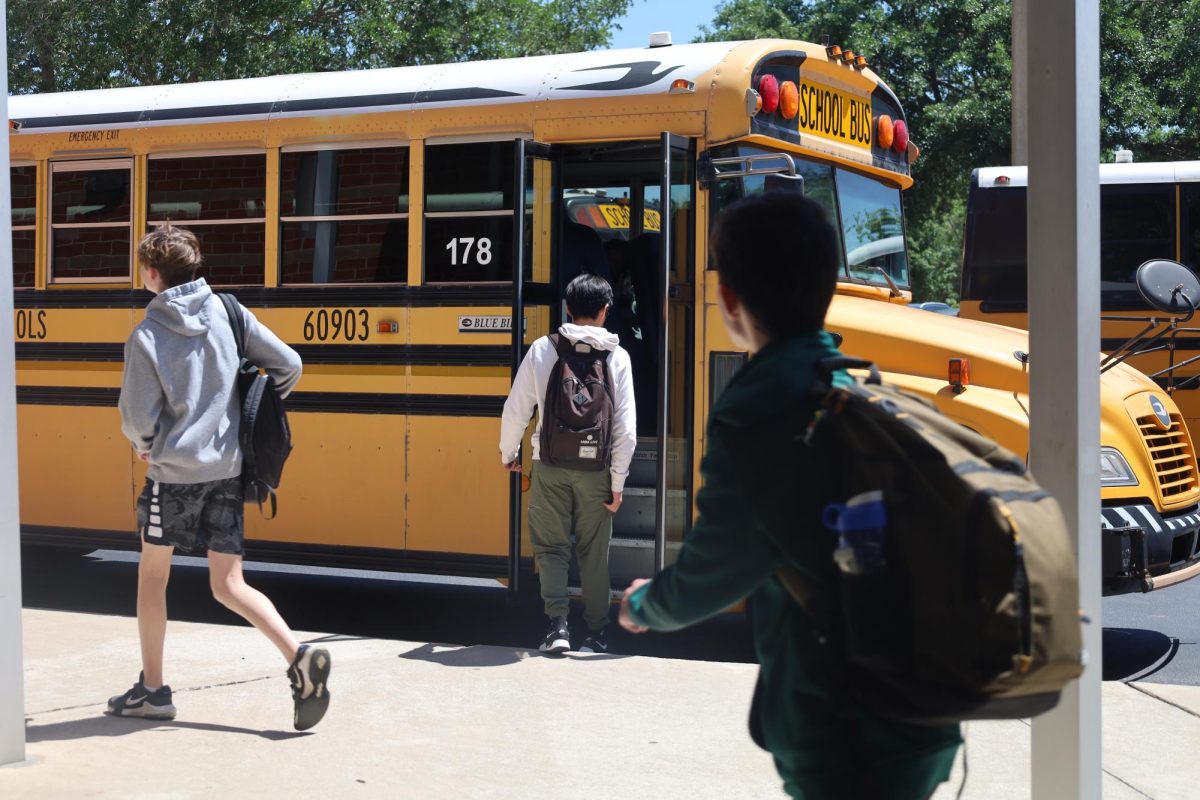



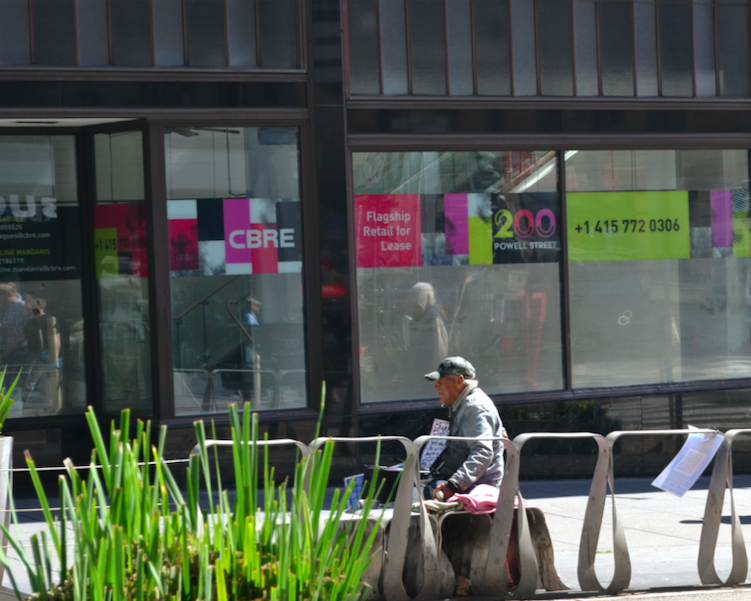


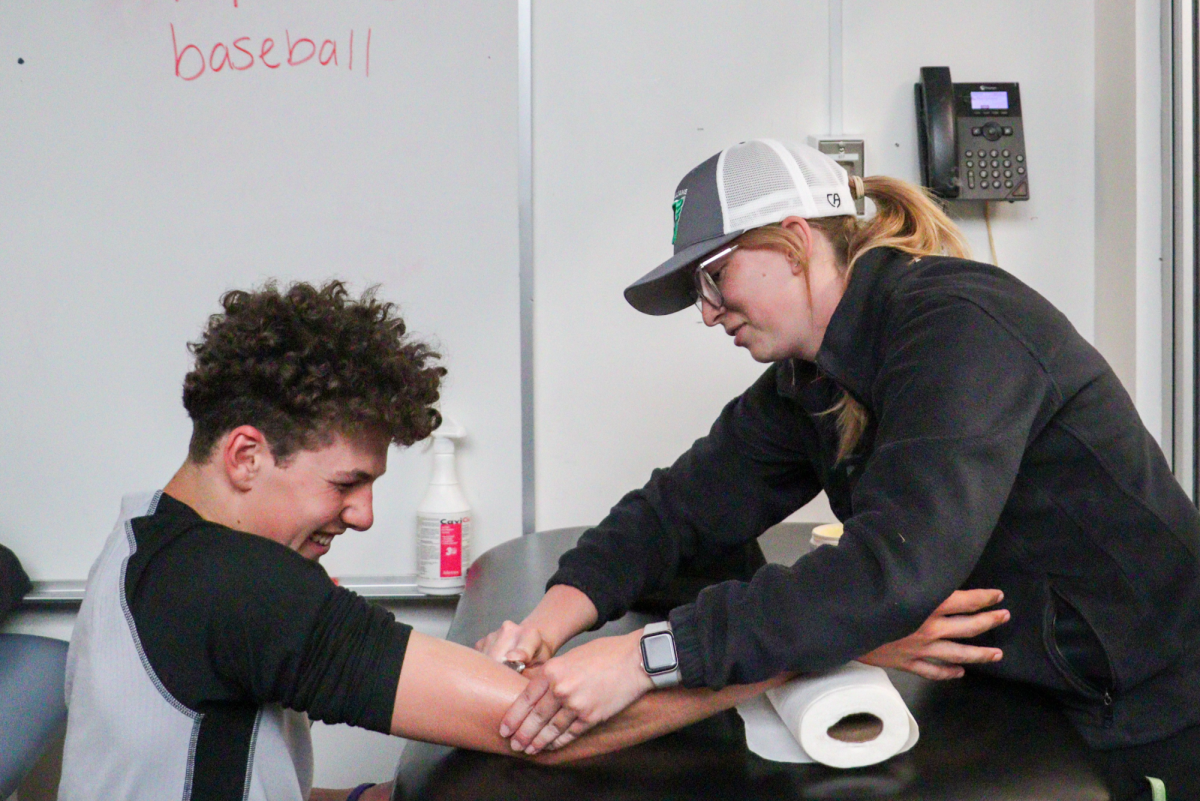










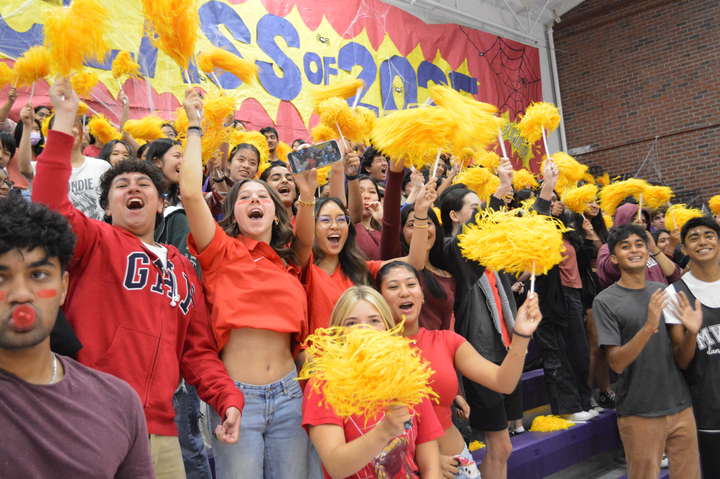
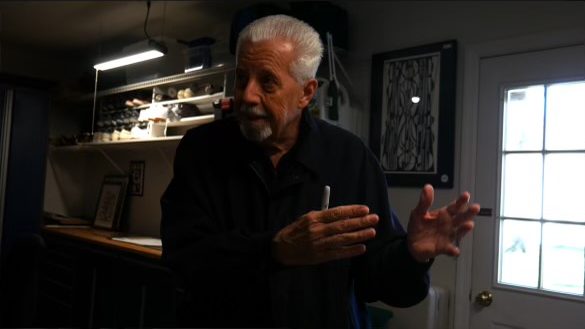
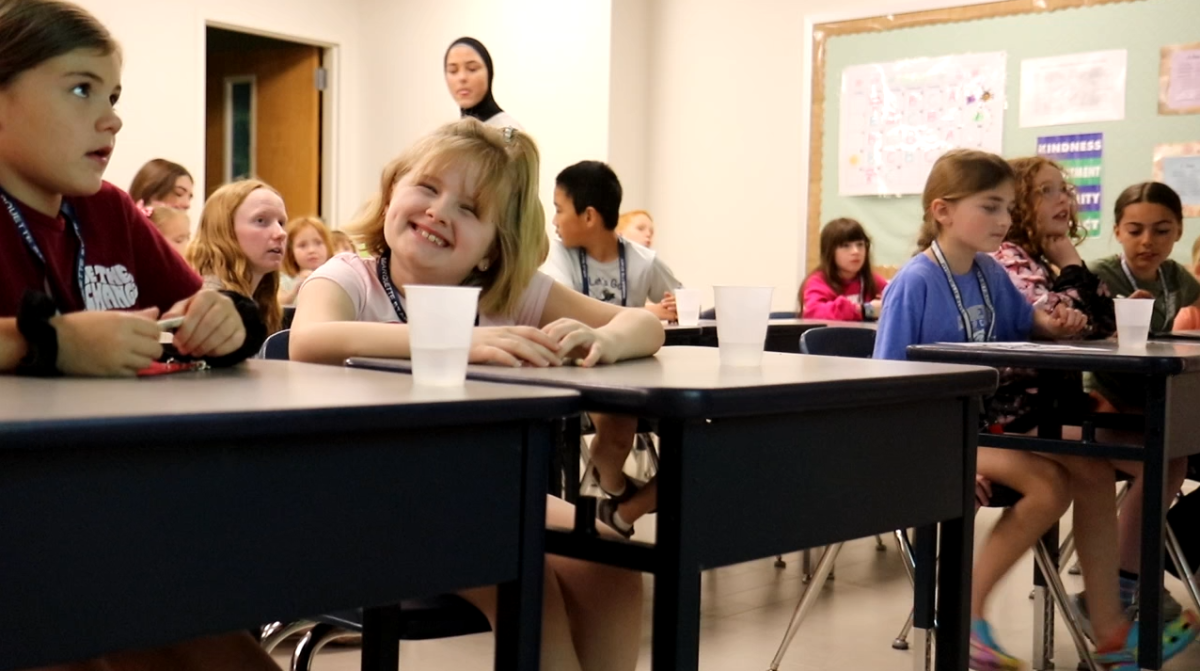








![IN THE SPOTLIGHT: Junior Zalie Mann performs “I Love to Cry at Weddings,” an ensemble piece from the fall musical Sweet Charity, to prospective students during the Fine Arts Showcase on Wednesday, Nov. 8. The showcase is a compilation of performances and demonstrations from each fine arts strand offered at McCallum. This show is put on so that prospective students can see if they are interested in joining an academy or major.
Sweet Charity originally ran the weekends of Sept. 28 and Oct. 8, but made a comeback for the Fine Arts Showcase.
“[Being at the front in the spotlight] is my favorite part of the whole dance, so I was super happy to be on stage performing and smiling at the audience,” Mann said.
Mann performed in both the musical theatre performance and dance excerpt “Ethereal,” a contemporary piece choreographed by the new dance director Terrance Carson, in the showcase. With also being a dance ambassador, Mann got to talk about what MAC dance is, her experience and answer any questions the aspiring arts majors and their parents may have.
Caption by Maya Tackett.](https://bestofsno.com/wp-content/uploads/2024/02/53321803427_47cd17fe70_o-1-1200x800.jpg)
![SPREADING THE JOY: Sophomore Chim Becker poses with sophomores Cozbi Sims and Lou Davidson while manning a table at the Hispanic Heritage treat day during lunch of Sept 28. Becker is a part of the students of color alliance, who put together the activity to raise money for their club.
“It [the stand] was really fun because McCallum has a lot of latino kids,” Becker said. “And I think it was nice that I could share the stuff that I usually just have at home with people who have never tried it before.”
Becker recognizes the importance of celebrating Hispanic heritage at Mac.
“I think its important to celebrate,” Becker said. “Because our culture is awesome and super cool, and everybody should be able to learn about other cultures of the world.”
Caption by JoJo Barnard.](https://bestofsno.com/wp-content/uploads/2024/01/53221601352_4127a81c41_o-1200x675.jpg)


